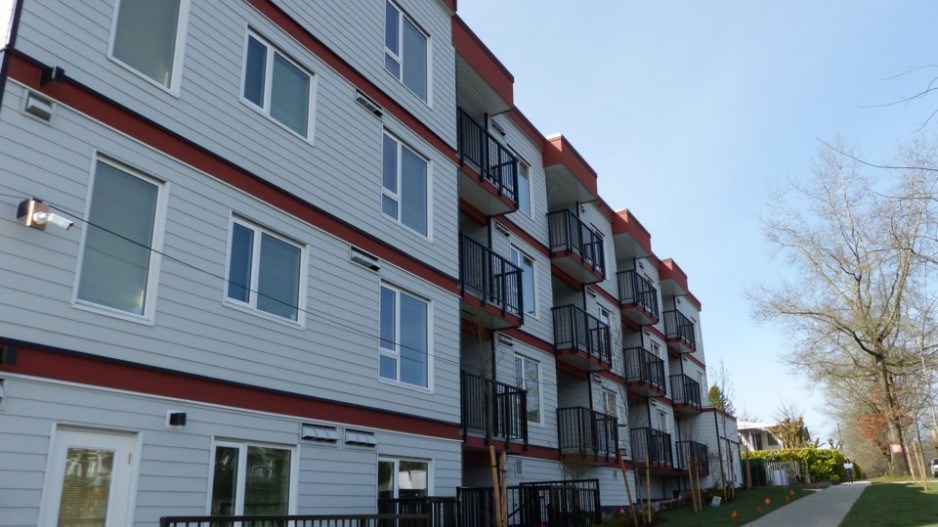A four-storey rental building that offers 23 homes for Indigenous peoples is now open in East Vancouver and tenants will pay at least 15% below market rental rates.
The Lu’ma Native Housing Society project in Renfrew Heights at 3819 Boundary Rd. also offers seven homes for low-income tenants. The building will house families and single people, including those who require accessible housing.
“I’m excited and honoured to be part of a process that truly demonstrates reconciliation in action,” said Kent Patenaude, president of the society, at a virtual news conference Monday that included Ahmed Hussen, the federal minister responsible for housing, David Eby, the provincial minister responsible for housing, Vancouver-Centre MP Hedy Fry and Mayor Kennedy Stewart.
The federal government provided $6.4 million in loans for the project and the provincial government contributed a $4.4 million grant. Lu’ma, which has a 40-year history of building and and managing housing for Indigenous peoples, has named the project Sp'óq'es Lá:lém, which translates in English to "eagles nest."
Hussen said the federal government’s investment comes via the rental construction financing initiative, a $25.7-billion program that provides low-cost loans to encourage the construction of 71,000 rental housing units across Canada.
“This is an amazing project for Indigenous families in Vancouver, and for the entire community,” Hussen said.
Eby stressed the importance of governments working together with non-profit housing providers to get housing built. Too many British Columbians, he said, are struggling to afford housing, with Indigenous peoples overrepresented in homeless counts.
“I know that these homes are going to make a real difference for the Indigenous folks in the community who live in these units by giving them peace of mind that comes with stable housing,” Eby said.
As Eby alluded to in his remarks, the project opens as B.C. continues to grapple with a homelessness crisis, with streets and parks in Victoria, Vancouver and other parts of the Lower Mainland occupied by people without a home.
In the March 2020 Metro Vancouver regional count, which included volunteers working in Vancouver, more than one third of all homeless people in Metro Vancouver identified as Indigenous; only 2% of the region’s population is Indigenous.
In addition, 51% of the Indigenous homeless population was found living on the street.
The count was conducted one week before the World Health Organization declared a pandemic because of the spread of COVID-19.
Since March, City of Vancouver housing staff estimated the homeless population increased by 200 people because of various factors related to the pandemic, including job loss, fewer people allowed in shelters and single-room-occupancy hotel operators preventing guests in tenants’ rooms.
The city contributed $270,000 to the project, with the mayor saying Monday that reconciliation was “not just a slogan.” He noted part of the city’s housing strategy is to build more housing for Indigenous peoples and strengthen partnerships with Indigenous housing societies.
“Throughout COVID-19, we’ve seen again and again how critical it is to make sure everyone has safe and secure housing, and we’ve sadly seen what happens when people don’t,” Stewart said.
“In a city as expensive as ours, losing one’s job, or getting injured or falling ill can mean losing your home and getting pushed out on the street.”
@Howellings




